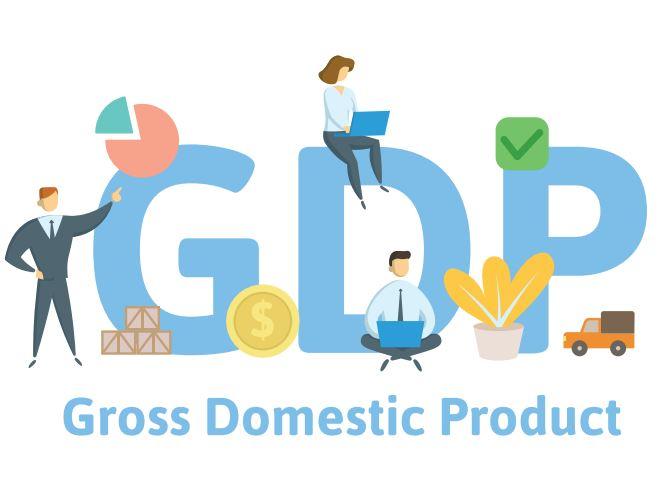
Gross Domestic Product (GDP) is a frequently used macroeconomic concept. In these Covid times, it is used far more extensively, including by the lay public. There are heated discussions in TV channels regarding the percentage of GDP that should be spent on relief and stimulus. More people are anxious to know about GDP and its implications.
GDP is the money value of all final goods and services produced in a country in one year. GDP reflects the size of the economy. From the expenditure side, GDP is composed of 4 elements: Consumption (C), Investment (I), Government expenditure (G) and Net exports (x-m).
So, GDP= C+I+G+(x-m)
Economic growth is not liner; it is cyclical. Long-term economic growth is characterized by expansions and contractions in economic activity. Boom or expansionary phase is characterized by rising business confidence and expansion in output and employment. Recession or contractionary phase is just the opposite. Recessions or economic slowdowns are caused by decline in consumption or investment or net exports. Often, the main reason is deficiency in investment demand since consumption demand is relatively stable. Investment demand can vary sharply depending on prevailing economic conditions, business confidence, market expectations and interest rates. During booms characterized by buoyant demand, rising prices, high profitability and elevated business confidence, entrepreneurs driven by animal spirits will make huge investment. On the other hand, during recessions business confidence will be low, consumption demand will slacken and business profitability will take a hit. Consequently, businessmen will cut down investment sharply pulling down aggregate demand, which further aggravatesrecession.
Fiscal and monetary stimulus
Economic theory has, broadly, two solutions to revive the economy from recessions. One, monetary policy and two, fiscal policy. Monetary policy is the domain of the central bank. Fiscal policy is implemented by the government through the budget. During recession, central banks follow a ‘cheap money policy’, which involves cutting interest rates. Cheap money stimulates consumption demand. More importantly, investment demand will get a big boost from the lower cost of capital. This in brief, is monetary stimulus.
During recessions, monetary transmission can be ineffective. Interest rate cuts announced by the central bank need not trickle down due to many reasons. Also, reduction in interest rates may not be sufficient to stimulate investment demand. Low business confidence will discourage businessmen from making investment. Under such circumstances, fiscal policy will be more effective.
Fiscal policy was popularized by the famous economist John Maynard Keynes. Fiscal policy is the policy of the government regarding taxation, public expenditure and borrowing. Keynes suggested increased public expenditure and reduced taxation to revive the economy from recession. Tax cuts can boost consumption demand through higher disposable income. And higher public expenditure will compensate for the deficiency in private investment. Thus aggregate demand revives paving the way for economic recovery.
GDP and Per capita GDP
As explained, GDP reflect the size of the economy. Per capita GDP (GDP divided by population) reflect the state of development of the economy. Developed/ rich economies have very high per capita GDP. Developing/poor economies have only low per capita GDP. Therefore, developed countries can afford a much higher stimulus than developing countries. Even though India’s GDP is the fourth largest in the world, our per capita GDP is 139th in the world. Therefore, our resources are limited. Presently the global economy is going through one of the worst recessions in modern times. There has been unprecedented synchronized rate cuts by the central banks. Leading central banks have been implementing Quantitative Easing – buying securities and flooding the market with liquidity – to ensure that interest rates remain low and the financial system works smoothly. Apart from this massive monetary stimulus by the central banks, governments are spending money on reliefs and stimulus. So, now we have an unprecedented situation of combined massive monetary and fiscal stimulus. This will help in economic recovery, but it is also likely to lead to unintended consequences. The bull run in stock markets globally since early April is an unintended consequence of this massive monetary stimulus. Rebalancing the balance sheets of the central banks would be a major challenge of central banking in the post-Covid world.









